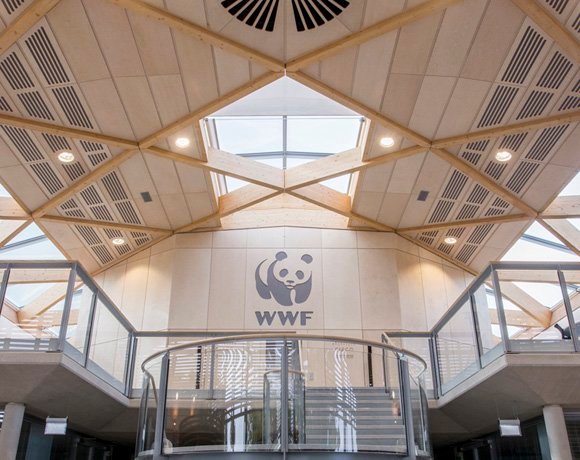IT at the WWF Living Planet Centre
Due to the conservational nature of the organisation, which has been working for a world where people and nature thrive for over 50 years, WWF was obviously concerned about its carbon footprint. As I arrived at the Living Planet Centre, I was asked how I had travelled there – this information is collated by the centre, with other details, and then projected onto audio-visual (AV) screens throughout the building.
It uses a ground source cooling system, which collects air at a constant 12.5°C from earth ducts and uses this to cool and heat the building as necessary. The centre is also fitted with photovoltaic cells on the roof to absorb the sun’s rays, the power from which is turned into electricity and used by the building – any surplus goes back to the national grid.
Additionally, water is harvested from large gutters on the roof of the building, which is processed before being used to flush lavatories and water plants on the site. Any excess goes into a sustainable urban drainage (SUD) system, which ends up in a pond outside where school children can come and pond dip and learn about ecosystems.
Even the timber arches in the magnificent building are covered in a waxy material which absorbs heat during the day and releases it in the evening to save energy.
While the building is still too new to be awarded green ratings, it is on track to be "outstanding" in the Building Research Establishment Environmental Assessment Method (Breeam) assessment, which is the most widely used method to assess the sustainability of buildings.










